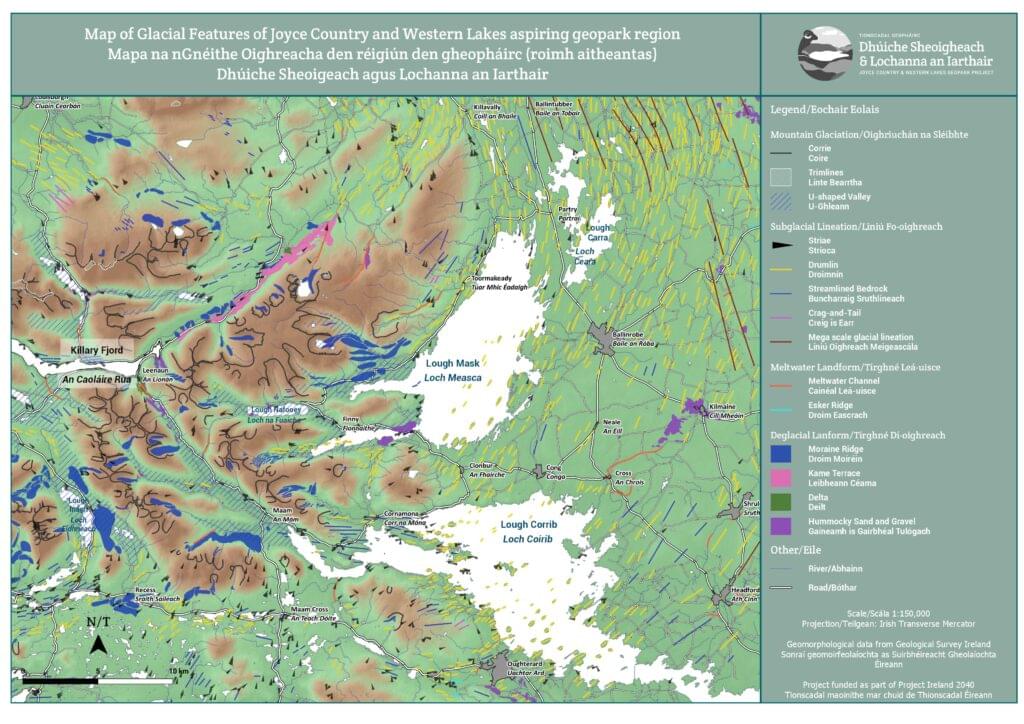EXPLORE OUR WHISPERING LANDSCAPE
Visiting our ancient landscape is no mean feat as it will allow you to explore unique testimonies of geological processes that took place over the last 700 million years (see below). Our region can boast to have the best complete record of the Grampian-Taconic orogeny, a geological event that started about 500 million years ago involving landmasses that are now found in the Appalachians (North America, find out more on the Cabox aspiring geopark website), Greenland, north west Ireland and Scotland(find out more on the North West Highland UNESCO Global Geopark website), with evidence of opening and closing of the Iapetus Ocean . This event saw the development of volcanic and magmatic arc, metamorphism (including the formation of green Connemara Marble) and regional scale deformation linked with the creation of a significant mountain range. Thanks to these various processes, the region displays a great geodiversity with outcrops of a wide range of rocks from each main type (igneous, sedimentary and metamorphic), a rich fossil record for the Ordovician, Silurian and Carboniferous geological periods and evidence of multiple folding and faulting events in the uplands. Ireland’s only fjord sits at Killary Harbour on the Wild Atlantic Way amidst a vast and diverse glaciological landscape throughout the region both in our mountains and our plains around our great lakes. With limestone outcropping in the eastern half of our area, major karst and epikarst landscapes were developed, with a specific expression in the Cong isthmus where you can find one of the world’s fastest flowing spring complex and multiple cave systems. Modern geological and biological processes are still at play today and a great place to experience these is at our unique marl lake and biodiversity hotspot, Lough Carra.
Read more on the geology here.

